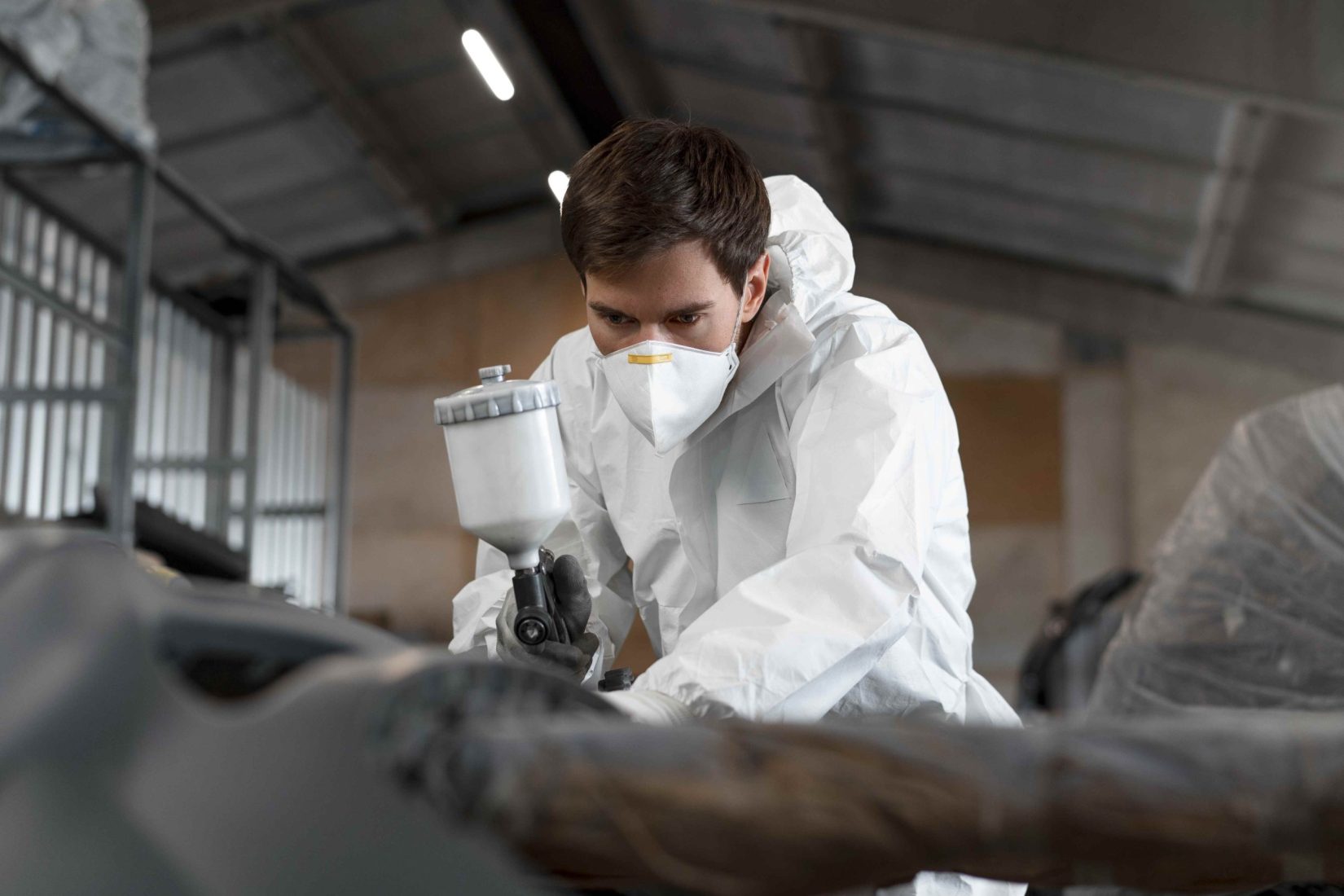
As the owners of Ask Environmental here in Central Alberta, we’ve learned that the things you can’t see can be the most dangerous in a workplace. One of the biggest hidden threats we encounter during air quality assessments is respirable particulates — fine dusts and particles small enough to travel deep into the lungs.
They’re not just “dust” — they’re microscopic hazards that can cause serious health problems over time. Whether you’re in manufacturing, construction, agriculture, or energy, if you’re generating dust, there’s a good chance respirable particulates are part of the mix.
What Are Respirable Particulates?
When we talk about respirable particulates, we’re referring to airborne particles with diameters typically less than 10 microns (PM₁₀), and especially those under 4 microns. These particles bypass the body’s natural filtration in the nose and throat and reach deep into the alveoli of the lungs.
Sources we see most often in Central Alberta include:
- Cutting, grinding, or sanding metal or concrete
- Welding and thermal spraying
- Agricultural activities like grain handling
- Mining and drilling operations
- Woodworking and sawmilling
The danger isn’t just their size — it’s also their composition. Silica, heavy metals, diesel particulate matter, and other toxic substances are common in certain industries.
Health Risks You Can’t Afford to Ignore
Exposure to respirable particulates isn’t always noticeable in the moment. Workers might feel fine after a shift, but the real risks are cumulative and long-term. Depending on what’s in the dust, prolonged exposure can lead to:
- Silicosis – an irreversible, often progressive lung disease caused by inhaling crystalline silica
- Chronic obstructive pulmonary disease (COPD)
- Occupational asthma
- Lung cancer
- Cardiovascular problems linked to fine particulate exposure.
We’ve met workers who thought “just wearing a dust mask” was enough protection, only to later discover serious lung damage. The reality is, without proper controls and monitoring, respirable particulates can quietly harm your workforce.
Alberta’s Safety Requirements
Under Alberta’s Occupational Health and Safety (OHS) Code, employers are legally required to protect workers from harmful airborne contaminants. That means understanding the potential hazards in your processes, ensuring exposures stay below occupational exposure limits, and documenting the steps taken to control risks.
For substances like crystalline silica, the limits are especially stringent — and for good reason. OHS officers can request air sampling data at any time, and failure to comply with exposure standards can lead to fines, work stoppages, and reputational damage.
How We Test for Respirable Particulates
When Ask Environmental conducts a particulate assessment, we focus on real-world conditions — not just lab theory. We:
- Review your processes – Identify dust-generating activities, materials, and duration of exposure.
- Deploy personal and area samplers – Lightweight monitors clip onto a worker’s clothing or are placed in fixed positions to capture air samples over a work shift.
- Analyze results – We work with accredited labs to determine particle size distribution and chemical composition.
- Compared to OHS limits – Your results are assessed against Alberta’s exposure standards.
- Recommend controls – From ventilation upgrades to targeted PPE, we focus on solutions that work for your operations and budget.
Our goal is to provide clear, actionable information so you can make informed safety decisions.
Practical Ways to Reduce Exposure
While testing tells you where you stand, the real benefit comes from taking action. Common control measures include:
- Installing or upgrading local exhaust ventilation
- Using wet methods for cutting or grinding to suppress dust
- Enclosing high-dust processes
- Implementing rigorous housekeeping (HEPA vacuums instead of dry sweeping)
- Providing fit-tested respirators appropriate to the hazard
We’ve seen companies cut exposure levels dramatically with just a few targeted improvements.
Read More: Common Air Quality Concerns in Alberta Workplaces and How to Address Them
Why Proactive Testing Pays Off
Too often, companies only call us after a worker has filed a complaint or an OHS inspector has raised concerns. By then, the clock is already ticking on potential enforcement action. Proactive testing not only helps you avoid penalties — it also builds trust with your workforce and demonstrates a genuine commitment to health and safety.
When workers see management investing in their well-being, morale improves. In our experience, a safe, clean work environment also reduces turnover and boosts productivity.
The Bottom Line for Central Alberta Workplaces
If your team is exposed to visible dust — or even if the air looks clear but processes generate fine particles — respirable particulate testing should be part of your safety program. We can help you get an accurate picture of your current exposure levels and create a practical plan to control risks.
At Ask Environmental, we’ve been protecting Central Alberta workers for years. We combine technical expertise with a straightforward approach: measure the hazard, explain the results in plain language, and guide you to workable solutions.
If you want to breathe easier knowing your workplace air is safe, give us a call. We’ll help you protect your team, your compliance record, and your reputation.
